Get policy right to develop non-apparel sectors
Economists tell IFC-PRI event
________________________________________
FE REPORT | January 13, 2020 12:00:00
________________________________________
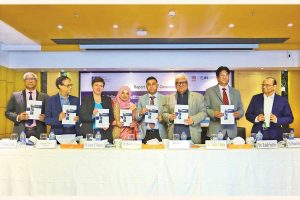
Adviser to the Prime Minister Dr Mashiur Rahman (third from right) seen with Ministry of Commerce Secretary Dr Md Jafar Uddin (second from right), IFC Country Manager for Bangladesh, Bhutan and Nepal Wendy Werner (third from left), Chairman of PRI Dr Zaidi Sattar (extreme right), Executive Director of PRI Dr Ahsan H Mansur (second from left) and others are seen at the launching ceremony of the report on “Building Competitive Sectors for Export Diversification: Opportunities and Policy Priorities for Bangladesh” at a city hotel on Sunday —Collected
Leather and footwear, plastics and light engineering have been identified as the potential sectors, which can help diversify the country’s export basket.
The sectors will also create greater access to the international markets for local products, according to a new report launched on Sunday.
The report highlighted the need for diversifying Bangladesh’s export basket in order to sustain accelerated economic growth, increase investment opportunities, and create more jobs, particularly for women.
The International Finance Corporation of the World Bank launched the diagnostic report titled “Building Competitive Sectors for Export Diversification: Opportunities and Policy Priorities for Bangladesh” at a programme, jointly organised by the IFC and Policy Research Institute of Bangladesh in Dhaka.
Prime Minister’s economic affairs advisor Dr Mashiur Rahman was present as the chief guest at the launching event, chaired by PRI chairman Dr Zaidi Sattar.
“Bangladesh’s economy is moving forward at a stable pace,” Dr Rahman said.
“The government has launched a concerted effort to diversify its exports and we sincerely hope this pioneering publication will help inform the policy discourse on sustainable export-led growth,” he added.
Dr Rahman, however, recommended reviewing the the government’s cash incentive programme, saying that ‘golpata’ and bricks exporters are receiving high percentage of cash support and they are destroying the Sundarbans and agricultural land respectively.
Commerce secretary Dr Mohammad Jafar Uddin said export is one pathway to leveraging the dynamic potentials of the global economy.
“We strongly believe that trade is a powerful engine of growth, not just for the world economy, but very much so for the developing economy of Bangladesh,” he said.
To sustain the growth trajectory and reduce overdependence on any single item, IFC country manager Wendy Werner said Bangladesh needs to build a strong manufacturing ecosystem and develop new products, while paving the way for large-scale job creation and poverty reduction.
Bangladesh has “serious problem” with export concentration as the bulk of export income comes from the readymade garment sector, said PRI executive director Ahsan H Mansur.
He underlined the need for diversifying of both products and markets.
Echoing Mr Mansur, Dr Sattar suggested selecting potential sectors and the development of right policy to increase export earnings of non-apparel products.
He warned that most new products introduced by exporters were not sustained beyond the first year.
He, however, stressed the need for addressing export sustainability on a priority basis as it is a critical challenge for maintaining diversification.
The report identified the lack of environmental and social compliance, poor handling of raw materials, the shortage of skilled workforce, the delay in relocating tanneries, poor access to finance, technological constraints, limited availability of accessories and components, and limited product and markets as the major constraints on the leather sector.
It made short-medium-long term recommendations for policymakers on strategy development to integrate priority sectors with the global value chain.
Speaking at the programme, Leathergoods and Footwear Manufacturers and Exporters Association of Bangladesh president Saiful Islam said only three local leather and leather goods companies have the Leather Working Group (LWG) certification.
The export earnings target of $5.0billion from leather and leather goods by 2021 might not be possible, he warned.
Currently leather is the second-largest export sector after apparels and the sector’s export is $1.02 billion.
The government should facilitate quick completion of the Central Effluent Treatment Plant of the Savar Tannery Industrial Estate for ensuring better prices of locally-made leather and leather goods.
“We must do something for value addition. Bangladesh has the comparative advantage of having own raw materials in the leather and leather goods sector,” he said.
The country’s export earnings grew negatively in the first half of current fiscal year, speakers said, suggesting diversification of both products and markets.
They also stressed the need for equal policy support to non-RMG sector as given to the RMG sector.
PRI research director MA Razzaque suggested that cement, steel and pharmaceutical exports should be boosted for the diversification of the export basket as these sectors have the potential to earn a lot.
Higher demand for some goods in the local markets can also encourage higher investment and higher export, he added.
Some $600 million worth of plastic goods are exported from Bangladesh in a year mainly as deemed export items like shipment with garment items as hanger and other goods, he said, adding plastic has good potential both for the local and international markets.
“It does not make any sense if the government deprives the companies, which manufacture both for the domestic and international markets, of bond facility. This is really a challenge for some sectors,” he added.
The IFC publication compares Bangladesh’s export performance to several comparator countries, including Vietnam, Cambodia, Malaysia, China and India, to identify where Bangladesh can improve.
It said economic factors like employment generation, women’s employment, growth of small and medium enterprises, and foreign direct investment are needed in seven potential sectors for export diversification.
munni_fe@yahoo.com
https://today.thefinancialexpress.com.bd/first-page/get-policy-right-to-develop-non-apparel-sectors-1578851212
12:00 AM, January 13, 2020 / LAST MODIFIED: 01:09 AM, January 13, 2020
Tannery estate needs quick upgrade for better leather prices
A top exporter says at IFC report launching
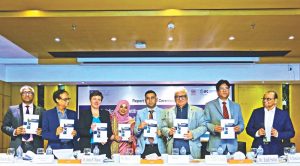



Star Business Report
The government should facilitate quick installation of the central effluent treatment plant at the Savar Tannery Industrial Estate to ensure better prices for Bangladeshi leather and leather goods, a top exporter said yesterday.
Local leather and leather goods exporters receive nearly 40 percent lower prices than their foreign peers, as they do not have the Leather Working Group (LWG) certification, a vital accreditation needed to receive fair prices from buyers.
Only three local leather and leather goods companies have the certification at the moment and they are helping the sector grow gradually.
“If all the 155 tanneries, housed at the leather industrial park in Savar, can obtain the certification, they will be able to receive proper prices from international buyers,” said Saiful Islam, president of the Leathergoods and Footwear Manufacturers and Exporters Association of Bangladesh.
He spoke at the launch of a report styled “Building Competitive Sectors for Export Diversification: Opportunities and Policy Priorities for Bangladesh”, published by the International Finance Corporation (IFC), the private sector lending arm of the World Bank Group.
The event took place at the Amari Hotel in Dhaka.
The CETP is not fully functional yet to get the LWG certification. As a result, local leather and leather goods manufacturers have to sell goods to some limited non-compliant Chinese manufacturers at cheaper rates.
“So, the target to export $5 billion worth of leather and leather goods by 2021 might not be possible,” Islam said.
Currently, the sector is the second largest foreign currency earner after ready-made garment. It fetched $1.02 billion in exports in the last fiscal year.
“We must do something for value-addition. Bangladesh has comparative advantage as the leather and leather goods sector has its own raw materials,” Islam said.
Bangladesh’s competitors such as Vietnam, Indonesia and Cambodia have the advantages of diversified products, the entrepreneur added.
Islam called for special allocation for product and market diversification and innovation, as the private sector has hardly had any innovation recently because of higher cost of funds. Cement, steel and pharmaceutical exports should be boosted to diversify the export basket because they have the capability to earn a lot if facilitated properly, said MA Razzaque, research director at the Policy Research Institute of Bangladesh (PRI).
Higher demand for some goods in the local market can also draw higher investment and higher export, he said.
For instance, per capita consumption of plastics in Bangladesh is five kg against the Asian average of 36kg. Domestic demand can help expand the market and ultimately boost exports, Razzaque also said.
Some $600 million worth of plastic goods are exported from Bangladesh every year mainly as dimmed export items like hanger. Plastics has good potential at both home and abroad, he said.
To the researcher, it does not make any sense why the government does not allow bonded warehouse facility to the companies that manufacture products both for local and international markets.
“This is really a challenge for some sectors,” he added.
The government is working to develop particular products in the areas of leather and leather goods, plastic, footwear and light engineering under a special scheme so that the goods can be exported in the near future, Commerce Secretary Mohammad Jafar Uddin said.
As part of an initiative to diversify markets, Bangladesh is trying to grab more market shares in Latin American countries like Brazil, Mexico and Argentina.
Moreover, Bangladesh has targeted the central Asian countries for market diversification, apart from traditional markets, namely the EU, the US and Canada, he said.
“However, Bangladesh will need to diversify skills along with market and product diversification,” he said.
A diversified export portfolio comprising competitive sectors, such as leather and footwear, plastics, and light engineering, will help create greater access to international markets for Bangladeshi products, the report said.
It recommended policymakers develop strategies in order to integrate priority sectors with the global value chain.
“To sustain its growth trajectory and reduce overdependence on any single item, Bangladesh needs to build a strong manufacturing ecosystem and develop new products, while paving the way for large scale job creation and poverty reduction,” said Wendy Werner, country manager of the IFC for Bangladesh, Bhutan and Nepal.
The IFC publication compared Bangladesh’s export performance with several comparator countries, including Vietnam, Cambodia, Malaysia, China and India, to identify areas for the country to improve.
Economic factors such as employment generation, women’s employment, growth of small and medium enterprises, and foreign direct investment are needed in seven potential sectors for export diversification, it said.
“Bangladesh’s economy is moving forward at a stable pace,” said Mashiur Rahman, adviser to the prime minister on economic affairs.
The government has initiated a concerted effort to diversify exports, he said.
https://www.thedailystar.net/business/news/tannery-estate-needs-quick-upgrade-better-leather-prices-1853362
Leather, plastic, light engineering identified for export diversification
Staff Correspondent | Published: 23:19, Jan 12,2020
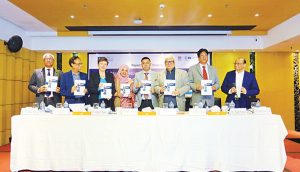



The International Finance Corporation has identified three sectors — leather and footwear, plastics, and light engineering — as highly potential areas for export diversification beyond the readymade garments.
The identification considered not only the contribution to increasing export income but also the potential to meet the economic goals such as creating employment opportunities for the large number of young entering the job market every year, said an IFC report released on Sunday.
The report ‘Building Competitive Sectors for Export Diversification: Opportunities and Policy Priorities for Bangladesh’ was launched at an event organised by the Policy Research Institute in Hotel Amari in the capital.
It said that a diversified export portfolio comprising competitive sectors, such as leather and footwear, plastics, and light engineering, would help create greater access to international markets for Bangladeshi products.
The report made recommendations for policymakers on strategy development to integrate priority sectors with the global value chain.
IFC senior economist M Masrur Reza and IFC private sector specialist Hosna Ferdous Sumi presented the report at the event.
Despite having significant contribution to the country’s economy, lack of environmental and social compliances is the major constraints to the leather sector growth, the report said.
It also identified poor handling of raw materials and lack of skilled workforce as the other challenges for the sector.
According to the report, compliance and availability of and access to finance and limited market access are the major challenges for the plastics sector.
For the light engineering sector, the IFC identified availability of raw materials, utility supply and technology and process sophistication as major constraints.
Speaking on the occasion as chief guest, prime minister’s economic affairs adviser Mashiur Rahman said Bangladesh’s economy was moving forward at a stable pace.
‘The government has launched a concerted effort to diversify its exports and we sincerely hope this pioneering publication will help inform the policy discourse on sustainable export-led growth,’ he said.
Commerce secretary Mohammad Jafar Uddin said exporting was one pathway to leveraging the dynamic potentials of the global economy.
‘We strongly believe that trade is a powerful engine of growth, not just for the world economy, but very much so for the developing economy of Bangladesh,’ he said.
PRI chairman Zaidi Sattar cautioned that most new products introduced by exporters did not sustain beyond the first year.
He stressed the need for addressing export sustainability on priority basis as it was a critical challenge for maintaining diversification.
Bangladesh has a serious problem with export concentration as the majority of the export earnings come from the readymade garment sector, said PRI executive director Ahsan H Mansur, suggesting that the country should diversify both products and markets.
Leathergoods and Footwear Manufacturers and Exporters Association of Bangladesh president Saiful Islam said only three local leather and leather goods companies had the Leather Working Group (LWG) certification.
So the export earnings target of $5.0 billion from leather and leather goods by 2021 might not be possible, he said.
The government should facilitate quick completion of the Central Effluent Treatment Plant of the Savar Tannery Industrial Estate for ensuring better prices for locally made leather and leather goods, he added.
https://www.newagebd.net/article/96396/leather-plastic-light-engineering-identified-for-export-diversification
Business
IFC identifies leather, plastic, light engineering for export diversification
Ahmed Shawki
• Published at 11:02 pm January 12th, 2020
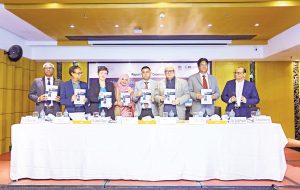



The IFC and the Policy Research Institute jointly organized the event
The International Finance Corporation (IFC), a member of the World Bank Group, has identified leather and footwear, plastics, and light engineering sectors as potential areas for diversifying the country’s export basket, which is currently highly dependent on apparel sector.
The IFC suggestion came at the launching of a report “Building Competitive Sectors for Export Diversification: Opportunities and Policy Priorities for Bangladesh” at a Dhaka city hotel on Sunday.
The IFC and the Policy Research Institute jointly organized the event.
IFC senior economist M Masrur Reza and IFC private sector specialist Hosna Ferdous Sumi presented the report in which they stressed building supply-side capacity of the industries to gain competitive advantage in export.
The report showed that leather and footwear, plastics, and light engineering would help create greater access to international markets for Bangladeshi products. It said that 84% of the country’s export earning was solely coming from the RGM sector.
The country’s export earnings in the first five months of the 2019-20 fiscal year stood at $15.77 billion, which was 12.59% less than the target and 7.6% lower year-on-year.
“To sustain its growth trajectory and reduce over dependence on any single item, Bangladesh needs to build a strong manufacturing ecosystem and develop new products, while paving the way for large scale job creation and poverty reduction,” said Wendy Werner, IFC Country Manager for Bangladesh, Bhutan and Nepal.
Leather Goods and Footwear Manufacturers and Exporters Association of Bangladesh (LFMEAB) President Md Saiful Islam said the country was currently using only 20% of its capacity of leather goods manufacturing and export.
“If we can use our full capacity, the country will earn five billion dollar a year from this industry. But we need better policy support from the government. The cost of fund is very high and holding back business from growth,” he said.
Bangladesh Plastic Goods Manufacturers and Exporters Association (BPGMEA) President Md Jasim Uddin mentioned that the per capita plastic consumption of the country was only 5 kg where in developed market this rate was 130 kg per year.
“So there is a huge domestic market. If the government provides proper policy support, we can go for plastic export with new products. Currently the plastic export is also based on RMG industry,” he said.
He said that although there was a 10% incentive on the plastic industry, most of the manufactures were failing to avail the facility because of bureaucratic complexities.
“Bangladesh’s economy is moving forward at a stable pace. The government has launched a concerted effort to diversify its exports and we sincerely hope this pioneering publication will help inform the policy discourse on sustainable export-led growth,” said Dr Mashiur Rahman, adviser to the prime minister on economic affairs and chief guest at the publication launching.
Special guest Mohammad Jafar Uddin, secretary, Ministry of Commerce, said: “Exporting is one pathway to leveraging the dynamic potentials of the global economy. We strongly believe that trade is a powerful engine of growth, not just for the world economy, but very much for a developing economy like Bangladesh.”
PRI Chairman Zaidi Sattar sounded caution that most new products introduced by exporters did not sustain beyond the first year and stressed the need to address export sustainability on a priority basis as it was a critical challenge for maintaining diversification.
“In recent times, the exchange of currency also become an issue of concern which needs more attention while promoting export,” he added.
https://www.dhakatribune.com/business/2020/01/12/ifc-identifies-leather-plastic-light-engineering-for-export-diversification
Bangladesh needs to diversify export basket: IFC
News Report Bangladesh needs to diversify its export basket to boost economic growth. The Intern-ational Finace Corporation (IFC), a member of the World Bank Group, has urged the government to take necessary steps in this connection. IFC launched a diagnostic report, which stressed the need for diversifying Bangladesh’s export basket in order to sustain accelerated economic growth, increase investment opportunities, and create more jobs, particularly for women. Bangladesh’s GDP has enjoyed an annual growth rate of 7.3 to 7.9 percent in the past two years (2018-19), with over two million new entrants joining the labor force every year. However, the country’s export earnings in the first five months of the current fiscal year (2019-20) stood at $15.77b, which was 12.59pc less than the target and 7.6 percent lower year-on-year, said an IFC press release. The report “Building Competitive Sectors for Export Diversification: Opportunities and Policy Priorities for Bangladesh”, launched in the capital reveals that a diversified export portfolio comprising competitive sectors, such as leather and footwear, plastics, and light engineering, will help create greater access to international markets for Bangladeshi products. It provides recomme-ndations for policymakers on strategy development to integrate priority sectors with the global value chain. Speaking on the occasion as the chief guest, PM’s Economic Affairs Adviser Dr Mashiur Rahman said Bangladesh’s economy is moving forward at a stable pace. “The government has launched a concerted effort to diversify its exports and we sincerely hope this pioneering publication will help inform the policy discourse on sustainable export-led growth,” he added. Commerce Secretary Dr. Mohammad Jafar Uddin spoke on the occasion as special guest. He said, “Exporting is one pathway to leveraging the dynamic potentials of the global economy. We strongly believe that trade is a powerful engine of growth, not just for the world economy, but very much so for the developing economy of Bangladesh.” “To sustain its growth trajectory and reduce overdependence on any single item, Bangladesh needs to build a strong manufacturing ecosystem and develop new products, while paving the way for large scale job creation and poverty reduction,” said Wendy Werner, IFC Country Manager for Bangladesh, Bhutan and Nepal. The IFC publication compares Bangladesh’s export performance to several comparator countries, including Vietnam, Cambodia, Malaysia, China and India, to identify where Bangladesh can improve. It considers economic factors like employment generation, women’s employment, growth of small and medium enterprises, and foreign direct investment needed in seven potential sectors for export diversification. This publication on export diversification, co-authored by Hosna Ferdous Sumi, IFC Private Sector Specialist, and Dr. Masrur Reaz, IFC Senior Economist, has been supported by Bangladesh Investment Climate Fund II, an IFC advisory project implemented in partnership with the UK Department for International Development. At the launching event organized in cooperation with Policy Research Institute (PRI), Dr. Zaidi Sattar, Chairman of PRI, cautioned that most new products introduced by exporters do not sustain beyond the first year. He stressed the need for addressing export sustainability on priority basis as it is a critical challenge for maintaining diversification.
http://www.newstoday.com.bd/index.php?option=details&news_id=2555228&date=2020-01-13
Leather, plastics and light engineering can diversify exports
The IFC has identified three sectors for export diversifications in Bangladesh
The International Finance Corporation (IFC) has identified three sectors – leather, plastics and light engineering – for export diversification beyond readymade garments (RMG).
IFC – a member of the World Bank Group – said the sectors have the potential to create greater access to international markets for Bangladeshi products.
The global lender made the observations in a report called “Building Competitive Sectors for Export Diversification: Opportunities and Policy Priorities for Bangladesh,” which was launched on Sunday at hotel Amari in the capital.
The report on export diversification was co-authored by Hosna Ferdous Sumi, IFC private sector specialist, and Dr Masrur Reaz, IFC senior economist.
The IFC report stressed the need for Bangladesh to diversify its export baskets in order to sustain accelerated economic growth, increase investment opportunities, and create more jobs – particularly for women.
The International Finance Corporation also gave recommendations for policymakers on strategy development to integrate priority sectors with the global value chain.
Taking to The Business Standard on the side-lines of the event, Sumi and Reaz said they had wanted to identify some potential sectors in Bangladesh, ones capable of developing a diversified export portfolio.
“Initially, we started with 15 potential sectors, which we downsized to 12 sectors; then we prioritised seven sectors, and finally selected three sectors, after ranking them,” they added.
“We are not saying that just these three sectors have high potential, but that seven sectors have the same capabilities,” said Hosna Ferdous Sumi.
“We selected these three sectors based on specific methodology,” added M Masrur Reaz.
“It is a very tough job to develop a single sector as the earner of above $10billion. We have developed only the RMG sector over the last 40 years, but we are hopeful about these three sectors,” said Senior Economist M Reaz.
“It is a very easy job to reform policies aiming at diversifying export baskets. It does not require an extra financial cost,” he added.
M Reaz said the World Bank has been closely working with the government to diversify the country’s exports.
“To sustain its growth trajectory and reduce over-dependence on a single item, Bangladesh needs to build a strong manufacturing ecosystem and develop new products, while paving the way for large scale job creation and poverty reduction,” said Wendy Werner, IFC Country Manager for Bangladesh, Bhutan and Nepal.
The IFC publication compared Bangladesh’s exports performance to several competitor countries – including Vietnam, Cambodia, Malaysia, China and India – to identify where Bangladesh can improve.
It considered economic factors – like employment generation, women’s employment, growth of small and medium enterprises, and foreign direct investment needed – in seven potential sectors for exports diversification.
“Bangladesh’s economy is moving forward at a stable pace. The government has launched a concerted effort to diversify its exports and we sincerely hope this pioneering publication will help inform the policy discourse on sustainable export-led growth,” said Dr Mashiur Rahman, economic affairs adviser to the prime minister.
He said institutional capacity is a major challenge for diversifying Bangladesh’s exports.
Expressing his concern over a multi-slab tax on exports, he said, “Why would tax rates be different on different exports when the government wants to diversify exports?”
Commerce Secretary Dr Mohammad Jafar Uddin said, “Exporting is one pathway to leveraging the dynamic potentials of the global economy. We strongly believe that trade is a powerful engine of growth, not just for the world economy, but also very much so for the developing economy of Bangladesh.”
“We, the Ministry of Commerce, have a project with the World Bank Group named EC4J aiming to diversify the export baskets. We have also focused on diversifying export destinations,” he added.
The commerce secretary said the government officials should change them by changing their work style, skills and attitude to fulfil the government’s such targets.
At the launch event – organised in cooperation with the Policy Research Institute – its Chairman Dr Zaidi Sattar cautioned that most new products introduced by exporters are not sustained beyond the first year.
He stressed the need to prioritise export sustainability because it is a critical challenge for maintaining diversification.
Participating in a discussion, former finance minister M Syeduzzaman said ensuring good governance, plus building institutional capacity and making it free of corruption, are very important in Bangladesh – for the diversification and expansion of exports.
Bangladesh Plastic Goods Manufacturers and Exporters Association President Md Jashim Uddin said, “Transferring our knowledge of success from the RMG to other sectors requires the government’s policy support.”
Despite the huge potential of the plastic and leather sectors, they do not receive policy support like for garments, he added.
Leather Goods and Footwear Manufacturers and Exporters Association of Bangladesh President Md Saiful Islam said, “We are facing challenges because we do not have Leather Working Group (LWG) certification for the Savar Leather Industrial Park.”
He expressed his doubt over whether the central effluent treatment plant of the leather industrial park will fulfil about 30 percent of the LWG’s requirements.
Dr PRI Executive Director Ahsan H Mansur delivered the welcome speech at the event.
https://tbsnews.net/economy/trade/ifc-stresses-export-diversification-sustainable-economic-growth-35825
IFC advises building competitive sectors to diversify Bangladesh export basket
News Desk, bdnews24.com
Published: 13 Jan 2020 01:22 AM BdST Updated: 13 Jan 2020 01:56 AM BdST
•
Representational Image: A stall of footwear and other leather goods at BLLISS, a Leathertech fair, at the International Convention City Bashundhara. Photo: Asif Mahmud Ove
The International Finance Corporation of the World Bank Group has advised Bangladesh to build competitive sectors for export diversification.
Doing so will help the country sustain accelerated economic growth, increase investment opportunities, and create more jobs, particularly for women, IFC said in a report released in Dhaka on Sunday.
The report, “Building Competitive Sectors for Export Diversification: Opportunities and Policy Priorities for Bangladesh”, reveals that a diversified export portfolio comprising competitive sectors, such as leather and footwear, plastics, and light engineering, will help create greater access to international markets for Bangladeshi products.
It provides recommendations for policymakers on strategy development to integrate priority sectors with the global value chain.
“To sustain its growth trajectory and reduce overdependence on any single item, Bangladesh needs to build a strong manufacturing ecosystem and develop new products, while paving the way for large scale job creation and poverty reduction,” IFC quoted its Country Manager Wendy Werner as saying in a statement.
The IFC publication compares Bangladesh’s export performance to several comparator countries, including Vietnam, Cambodia, Malaysia, China and India, to identify where Bangladesh can improve.
It considers economic factors like employment generation, women’s employment, growth of small and medium enterprises, and foreign direct investment needed in seven potential sectors for export diversification.
“Bangladesh’s economy is moving forward at a stable pace. The government has launched a concerted effort to diversify its exports and we sincerely hope this pioneering publication will help inform the policy discourse on sustainable export-led growth,” the statement quoted the Prime Minister’s Economic Affairs Adviser Mashiur Rahman as saying.
Commerce Secretary Mohammad Jafar Uddin was also present.
The report, co-authored by IFC Private Sector Specialist Hosna Ferdous Sumi and Senior Economist Masrur Reaz, has been supported by Bangladesh Investment Climate Fund II, an IFC advisory project implemented in partnership with the UK Department for International Development.
At the launching event organised in cooperation with Policy Research Institute, its Chairman Zaidi Sattar cautioned that most new products introduced by exporters are not sustained beyond the first year.
He stressed the need for addressing export sustainability on priority basis as it is a critical challenge for maintaining diversification.
https://bdnews24.com/economy/2020/01/13/ifc-advises-building-competitive-sectors-to-diversify-bangladesh-export-nasket
বাংলাদেশের রপ্তানি বহুমুখী করতে হবে : আইএফসি
কালের কণ্ঠ অনলাইন
১৩ জানুয়ারি, ২০২০ ১০:১৪ | পড়া যাবে ৪ মিনিটে
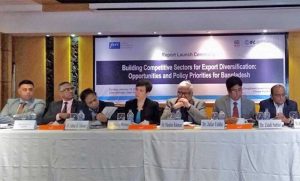



বিশ্ব ব্যাংকের সহযোগী সংস্থা ইন্টারন্যাশনাল ফাইন্যান্স করপোরেশন (আইএফসি) ‘বিল্ডিং কম্পিটিটিভ সেক্টরস ফর এক্সপোর্ট ডাইভারসিফিকেশন : অপরচুনিটিস অ্যান্ড পলিসি প্রায়োরিটিস ফর বাংলাদেশ’ নামে প্রতিবেদনটি গতকাল রবিবার ঢাকায় এক অনুষ্ঠানে প্রকাশ করে। পণ্যের বহুমুখীকরণ নিয়ে বিশ্বব্যাংকের সহযোগী সংস্থা আইএফসির গবেষণার ফলাফল উঠে এসেছে প্রতিবেদনে।
পিআরআইয়ের চেয়ারম্যান জায়েদী সাত্তারের সঞ্চালনায় অনুষ্ঠানে অন্যদের মধ্যে বক্তব্য দেন প্রধানমন্ত্রীর উপদেষ্টা ড. মসিউর রহমান, বাণিজ্যসচিব জাফর উদ্দিন, বাণিজ্য মন্ত্রণালয়ের অতিরিক্ত সচিব ওবায়দুল আজম, বাংলাদেশ প্লাস্টিক গুডস ম্যানুফ্যাকচারার্স অ্যান্ড এক্সপোর্টার্স অ্যাসোসিয়েশনের সভাপতি জসিম উদ্দিনসহ অন্যরা।
নতুন যেকোনো ব্যবসা শুরু করতে চাইলে ব্যবসায়ীদের যে দীর্ঘ সময় পথ পাড়ি দিতে হয়, সেই সময় কমিয়ে আনার তাগিদ দিয়েছেন আলোচকরা। পোশাক খাতকে সরকার দিনের পর দিন যেভাবে প্রণোদনা দিয়ে আসছে; রপ্তানিতে সম্ভাবনাময় অন্যান্য খাতকেও সমানভাবে প্রণোদনা দেওয়ার দাবি করেছেন ব্যবসায়ীরা।
সংস্থাটির বেসরকারি খাত বিশেষজ্ঞ হোসনা ফেরদৌস সুমি ও জ্যেষ্ঠ অর্থনীতিবিদ মাসরুর রিয়াজ যৌথভাবে প্রতিবেদনটি তৈরি করেন।
বাংলাদেশ থেকে ১৬০০ ধরনের পণ্য বিশ্বের বিভিন্ন বাজারে রপ্তানি হয় জানিয়ে প্রতিবেদনে বলা হয়, তৈরি পোশাকের ২৯২ ধরনের পণ্য থেকেই মোট রপ্তানি আয়ের ৮৫ ভাগ আসে। বাকি ১৩ শতাধিক পণ্য থেকে আসে মাত্র ১৫ শতাংশ আয়। কিন্তু এই এক হাজার ৩০০ পণ্যের মধ্যে প্রচুর পণ্য রয়েছে, যেগুলোর বাজার অনেক বড় এবং প্রতিনিয়ত চাহিদা বাড়ছে। বিশেষ করে চামড়া ও চামড়াজাত পণ্য, প্লাস্টিক পণ্য, হালকা প্রকৌশল পণ্য ও ওষুধের বাজার বড় হচ্ছে। এসব খাতে বাংলাদেশের সক্ষমতা অনেক দেশের তুলনায় বেশি। ফলে সরকারের যথাযথ নীতি সহায়তা পেলে এসব খাত থেকে রপ্তানি আয় বাড়ানোর ব্যাপক সম্ভাবনা রয়েছে।
বাংলাদেশের অর্থনীতি গত দুই বছরে ৭ দশমিক ৩ থেকে ৭ দশমিক ৯ শতাংশ পর্যন্ত প্রবৃদ্ধি অর্জন করেছে। এ সময়ে ২০ লাখেরও বেশি মানুষ শ্রমশক্তিতে যোগ হয়েছে বলে জানিয়েছে বাংলাদেশ পরিসংখ্যান ব্যুরো। তবে অর্থবছরের (২০১৯-২০) প্রথম পাঁচ মাসে রপ্তানি আয় ১৫ দশমিক ৭৭ বিলিয়ন ডলারে আটকে আছে, যা লক্ষ্যমাত্রার তুলনায় ১২ দশমিক ৫৯ ভাগ কম। এটি গত বছরের রপ্তানির তুলনায় ৭ দশমিক ৬ শতাংশ কম বলে জানিয়েছে আইএফসি।
অনুষ্ঠানে প্রধানমন্ত্রীর উপদেষ্টা ড. মসিউর রহমান বলেছেন, বাংলাদেশের অর্থনীতি বর্তমানে একটি স্থিতিশীল গতিতে সামনে এগিয়ে যাচ্ছে। সরকার রপ্তানিপণ্য বহুমুখী করতে কার্যকর পদক্ষেপ নিয়েছে। আমরা বিশ্বাস করি এ প্রকাশনা নীতিনির্ধারকদের টেকসই রপ্তানিমুখী প্রবৃদ্ধি অর্জনে তথ্য দিয়ে সহায়তা করবে।
তিনি বলেন, রপ্তানি খাতে করহার, কর আদায় পদ্ধতি ও বিভিন্ন ধরনের প্রণোদনা নিয়ে ব্যাপক পর্যালোচনা হওয়া উচিত। কারণ অনেক ক্ষেত্রে অপ্রয়োজনীয় উদ্যোগ রয়েছে। আবার গবেষণায়ও জোর দিতে হবে, যাতে নতুন পণ্য উদ্ভাবন করা যায়।
আইএফসির কান্ট্রি ম্যানেজার ওয়েন্ডি ওয়ার্নার বলেন, চামড়া ও পাদুকা, প্লাস্টিক ও হালকা প্রকৌশল শিল্প বাংলাদেশকে আন্তর্জাতিক বাজারে আরও অন্তর্ভুক্তির সুযোগ করে দিতে পারে। এ জন্য সরকারকে নীতিগত কিছু উদ্যোগ নিতে হবে।
পিআরআই চেয়ারম্যান জাইদি সাত্তার বলেন, একটি পণ্যের ওপর নির্ভর করে এগোনো যাবে না। রপ্তানির অন্যান্য খাতকে এগিয়ে নিতে সরকারের নীতিতে পরিবর্তন আনতে হবে। বাণিজ্য সচিব ড, জাফর উদ্দীন বলেন, পণ্য বহুমুখীকরণ জরুরি। তবে বহুমুখীকরণের ধরন পাল্টাতে হবে।
লেদার অ্যান্ড ফুটওয়ার ম্যানুফ্যাকচারার্স অ্যাসোসিয়েশনের সভাপতি সাইফুল ইসলাম বলেন, ভিয়েতনামের নিজস্ব চামড়া নেই। আবার জনসংখ্যাও কম। কিন্তু ভিয়েতনাম বছরে প্রায় ৩০ বিলিয়ন ডলারের চামড়া ও চামড়াজাত পণ্য রপ্তানি করে। কিন্তু বাংলাদেশের নিজস্ব চামড়া ও পর্যাপ্ত জনবল থাকা সত্ত্বেও রপ্তানি হচ্ছে এক বিলিয়ন ডলার।
প্লাস্টিক দ্রব্য প্রস্তুত ও রপ্তানিকারক সমিতির সভাপতি মো. জসিমউদ্দিন বলেন, প্লাস্টিকের চাহিদা বিশ্বব্যাপী বাড়ছে। এ শিল্পের সম্ভাবনা অনেক। তবে সরকারের নীতি সহায়তা বাড়াতে হবে।
https://www.kalerkantho.com/online/business/2020/01/13/861915
আইএফসির সমীক্ষা প্রতিবেদন
রফতানিতে বৈচিত্র্য আনতে তিন খাত শনাক্ত
নিজস্ব প্রতিবেদক
জানুয়ারি ১৩, ২০২০
বাংলাদেশের চলমান উন্নয়ন ধারায় অর্থনৈতিক প্রবৃদ্ধি টিকিয়ে রাখতে গুরুত্বপূর্ণ ভূমিকা রয়েছে বৈচিত্র্যময় রফতানির। এ বিষয়ে জাতীয় পর্যায়ে বেশকিছু কৌশলপত্র প্রণয়নসহ অনেক সম্ভাবনাময় খাত নিয়ে আলোচনা হয়েছে। এ প্রেক্ষাপটে ওয়ার্ল্ড ব্যাংক গ্রুপের অঙ্গ সংস্থা ইন্টারন্যাশনাল ফিন্যান্স করপোরেশন (আইএফসি) বাংলাদেশের রফতানির বৈচিত্র্য নিয়ে একটি সমীক্ষা করে এ সেক্টরে ভিন্নতা আনতে মোট তিনটি খাতকে শনাক্ত করেছে। খাতগুলো হলো চামড়া ও চামড়াজাত পণ্য, প্লাস্টিক এবং প্রকৌশল দ্রব্য। গতকাল আইএফসির সমীক্ষা প্রতিবেদন প্রকাশ অনুষ্ঠানে এসব তথ্য জানা গেছে।
গতকাল রাজধানীর গুলশানের একটি হোটেলে ‘বিল্ডিং কম্পিটিটিভ সেক্টরস ফর এক্সপোর্ট ডাইভারসিফিকেশন: অপরচুনিটিজ অ্যান্ড পলিসি প্রায়োরিটিজ ফর বাংলাদেশ’ শীর্ষক এ প্রতিবেদন প্রকাশ করা হয়। আইএফসির সঙ্গে যৌথভাবে অনুষ্ঠানটি আয়োজন করে বেসরকারি গবেষণা প্রতিষ্ঠান পলিসি রিসার্চ ইনস্টিটিউট (পিআরআই)। এতে প্রধান অতিথি ছিলেন প্রধানমন্ত্রীর অর্থনৈতিক বিষয়ক উপদেষ্টা ড. মসিউর রহমান। বিশেষ অতিথি ছিলেন বাণিজ্য মন্ত্রণালয়ের সচিব ড. মো. জাফর উদ্দীন। স্বাগত বক্তব্য রাখেন পিআরআইয়ের নির্বাহী পরিচালক ড. আহসান এইচ মনসুর ও আইএফসির কান্ট্রি ম্যানেজার ওয়েন্ডি ওয়ার্নার। প্রতিবেদনটির ওপর উপস্থাপনা পেশ করেন আইএফসির সিনিয়র ইকোনমিস্ট ড. এম মাশরুর রিয়াজ ও প্রাইভেট সেক্টর স্পেশালিস্ট হোসনা ফেরদৌস সুমি।
অনুষ্ঠানে প্যানেল আলোচক ছিলেন বাণিজ্য মন্ত্রণালয়ের অতিরিক্ত সচিব ওবায়দুল আজম, চামড়া ও চামড়াজাত পণ্যসংশ্লিষ্ট মালিক সংগঠন এলএফএমইএবির সভাপতি সাইফুল ইসলাম, প্লাস্টিক খাতের শিল্প মালিক সংগঠন বিপিজিএমইএ সভাপতি মো. জসিম উদ্দিন ও পিআরআইয়ের গবেষণা পরিচালক ড. আব্দুর রাজ্জাক। আরো বক্তব্য রাখেন ডিএফআইডির সিনিয়র প্রাইভেট সেক্টর ডেভেলপমেন্ট অ্যাডভাইজর মহেশ মিশ্রা ও পিআরআই চেয়ারম্যান ড. জাইদি সাত্তার।
প্রতিবেদনের সারাংশে বলা হয়েছে, রফতানি সেক্টরকে আরো গভীরভাবে বিশ্লেষণের জন্য তিনটি খাতকে শনাক্ত করা হয়েছে। সমীক্ষার ফলাফলের ভিত্তিতে এগুলো নিয়ে বাণিজ্য মন্ত্রণালয় ও খাতসংশ্লিষ্টদের সঙ্গে আলোচনা চলছে। প্রতিবেদনে চামড়া ও চামড়াজাত পণ্য, প্লাস্টিক এবং প্রকৌশল দ্রব্য—এ তিন খাতের সক্ষমতা ও বিকাশের অন্তরায়গুলোর ওপর গুরুত্বারোপ করা হয়েছে।
প্রধান অতিথির বক্তব্যে ড. মসিউর রহমান বলেন, সরকার রফতানি বৈচিত্র্যে গুরুত্ব দিচ্ছে এবং আমি আশাবাদী যে এ প্রতিবেদনটি রফতানিনির্ভর প্রবৃদ্ধি অর্জনে নীতিনির্ধারণে সরকারকে সহযোগিতা করবে। দুটি পণ্যের নগদ প্রণোদনা পর্যালোচনা করা হবে বলে মত প্রকাশ করে তিনি বলেন, গোলপাতা ও ইট রফতানিকারকরা উচ্চহারে নগদ সহায়তা পাচ্ছেন, যা সুন্দরবন ও কৃষিজমি ধ্বংস করছে।
প্রতিবেদনে রফতানিতে বৈচিত্র্যের বিষয়ে অগ্রাধিকার ভিত্তিতে তিনটি খাত শনাক্তের পাশাপাশি এ প্রক্রিয়ায় বিদ্যমান প্রতিকূলতা কাটিয়ে উঠতে স্বল্প-মধ্য-দীর্ঘমেয়াদে কর্মপরিকল্পনার সুপারিশ করা হয়েছে। স্বল্পমেয়াদি বা ছয় থেকে ১২ মাসভিত্তিক কর্মপরিকল্পনার মধ্যে আছে সম্ভাবনাময় সর্বোচ্চ পাঁচটি খাত শনাক্ত করা, রফতানি উন্নয়ন তহবিলের কার্যকারিতা যাচাই সাপেক্ষে অর্থায়ন ব্যবস্থা নিশ্চিত করা, কাঁচামাল ও প্রযুক্তির প্রাপ্যতা নিশ্চিত করা এবং কর ব্যবস্থা সহজীকরণ। মধ্যমেয়াদি বা এক থেকে দুই বছর মেয়াদি কর্মপরিকল্পনার মধ্যে আছে কমপ্লায়েন্স নিশ্চিত করা ও অর্থায়ন ব্যবস্থা। দীর্ঘ বা দুই থেকে তিন বছর মেয়াদি কর্মপরিকল্পনার মধ্যে আছে ট্রেড লজিস্টিকস উন্নয়ন, কেন্দ্রীয় বর্জ্য শোধনাগারসহ অন্যান্য কমপ্লায়েন্স নিশ্চিত করা।
https://bonikbarta.net/home/news_description/217276/%E0%A6%B0%E0%A6%AB%E0%A6%A4%E0%A6%BE%E0%A6%A8%E0%A6%BF%E0%A6%A4%E0%A7%87-%E0%A6%AC%E0%A7%88%E0%A6%9A%E0%A6%BF%E0%A6%A4%E0%A7%8D%E0%A6%B0%E0%A7%8D%E0%A6%AF-%E0%A6%86%E0%A6%A8%E0%A6%A4%E0%A7%87-%E0%A6%A4%E0%A6%BF%E0%A6%A8-%E0%A6%96%E0%A6%BE%E0%A6%A4-%E0%A6%B6%E0%A6%A8%E0%A6%BE%E0%A6%95%E0%A7%8D%E0%A6%A4




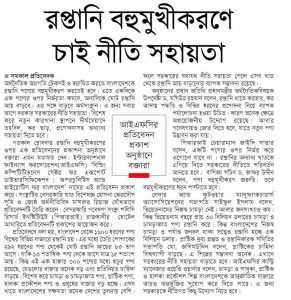



http://epaper.samakal.com/nogor-edition/2020-01-13/12





